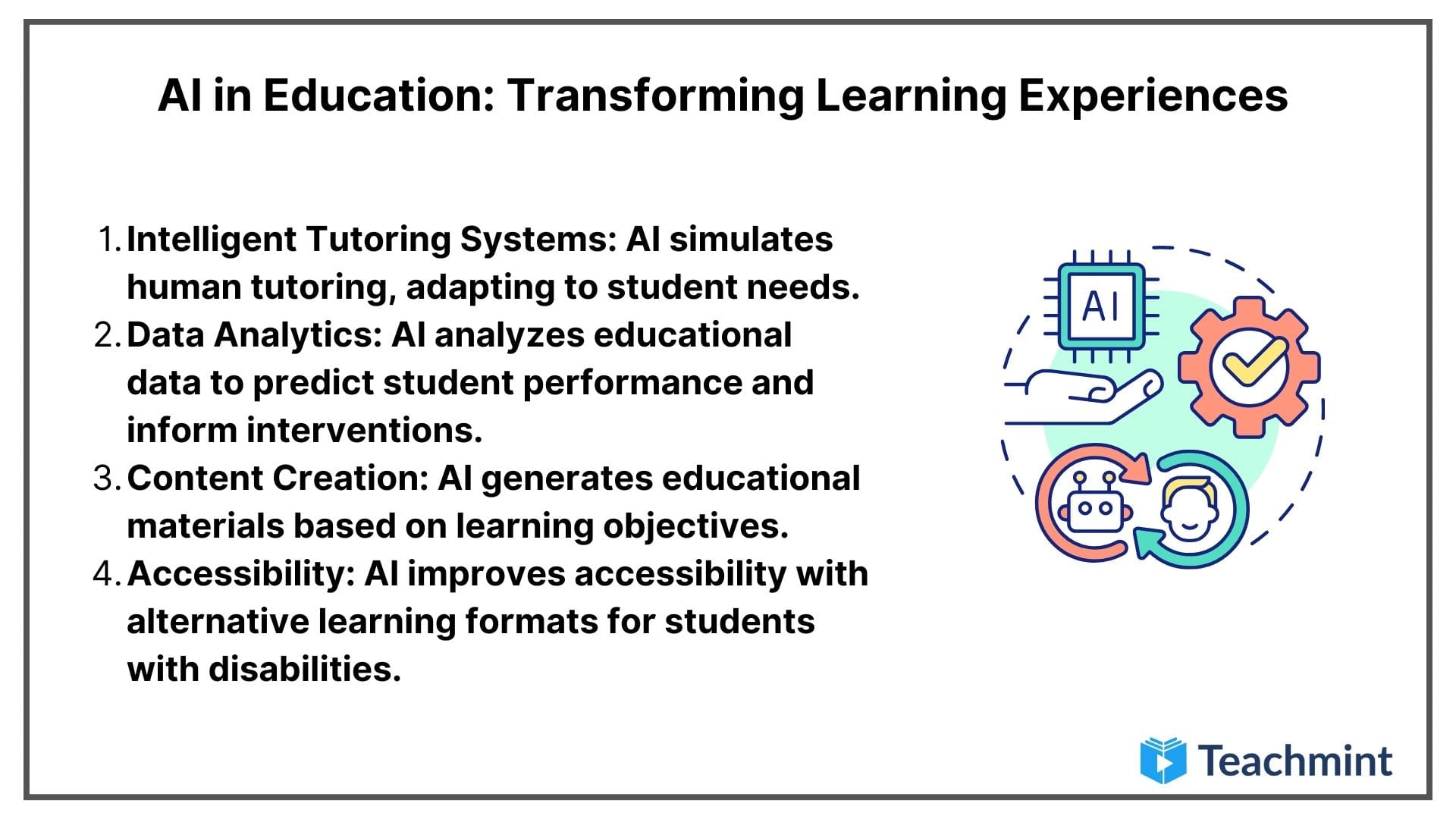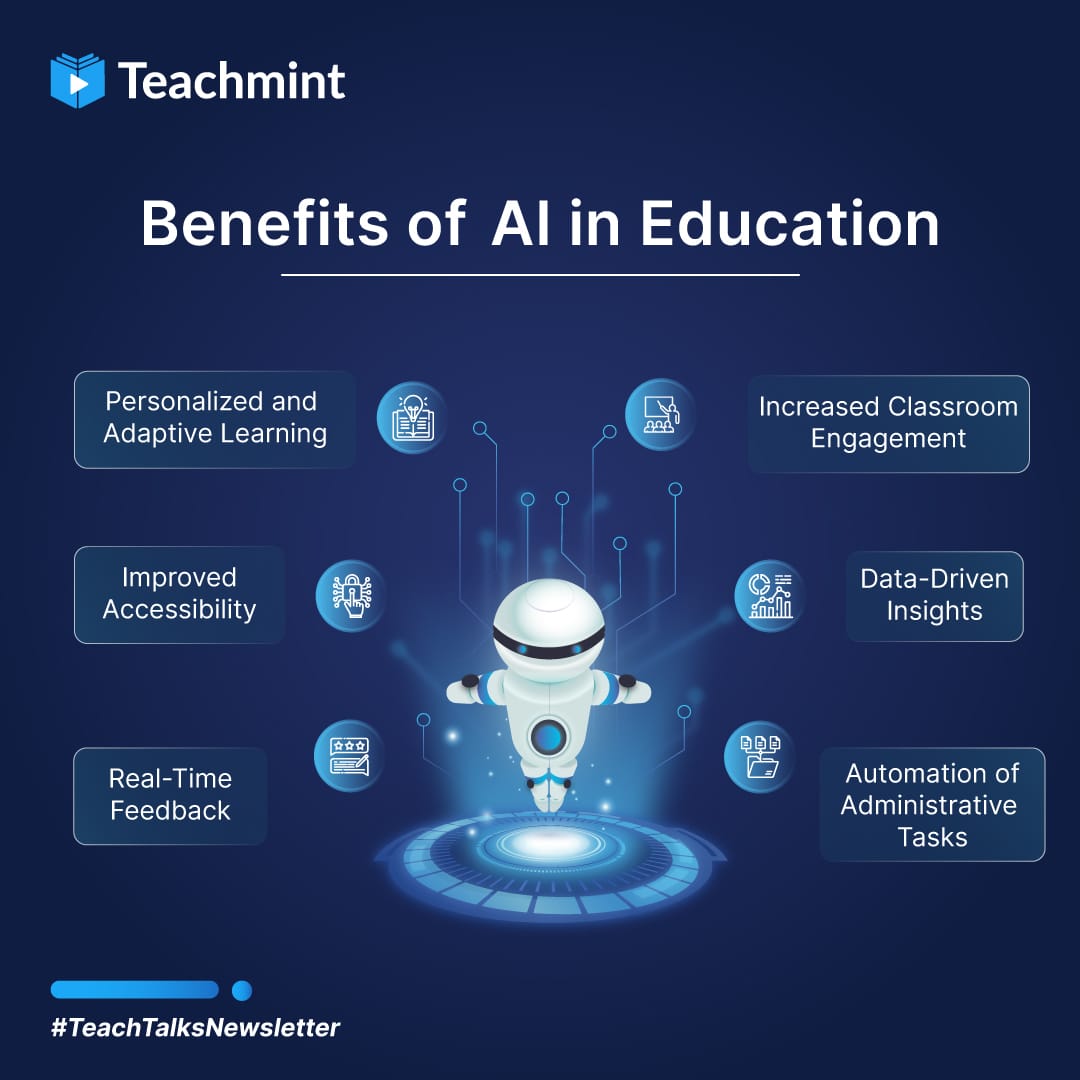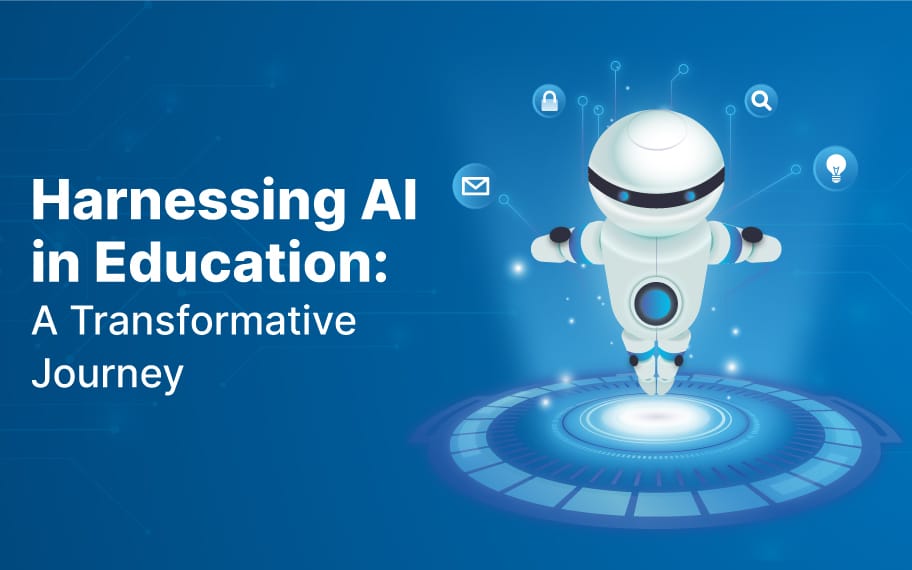In the dynamic world of education, school leaders are at the forefront of a rapidly evolving landscape, where technology is reshaping the way we teach and learn. But amidst this transformation, one question looms large: How can they effectively leverage Artificial Intelligence (AI) to propel their schools into the future?
Let's embark on a journey to explore the transformative potential of AI in education. From dispelling common misconceptions to uncovering practical applications and strategic integration strategies, we'll delve into the myriad ways AI can revolutionize the educational experience.
Enhanced Efficiency: AI can automate administrative tasks for teachers and assist them in creating learning materials. With smart virtual assistants to help educators keep track of their schedules, share reminders, and respond to queries, AI can also enhance their productivity.
Data-driven decision making: AI-based systems can accurately analyze students' performance and provide a comprehensive view to educators. They can use these insights for early intervention in the learning process of students who are lagging.
Personalized and Immersive Learning: The role AI can play in personalizing learning is remarkable! By creating courses, quizzes, and assessments in line with an individual student’s strengths, it enables educators to address specific gaps and personalise learning with effectiveness at-scale.

Strategic Adoption of AI
Leveraging AI in the right way, in the right measure, has the potential to transform the K-12 education landscape.
Traditional methods, including classroom modes of learning, are important, but education moves the world forward and deserves the best technology to enable this pursuit. The right mix of technology and AI must be adopted to expand the potential of education for all:
- Building Awareness – It’s important to build awareness of how AI helps in education amongst educators, administrators, teachers, students, and parents. The entire ecosystem needs to embrace and understand the role of artificial intelligence in education to be able to make best use of the same.
- Identifying Use Cases – The selection of the right use cases for the application of AI is critical, like using AI to optimize administrative tasks to save teaching hours, enabling educators to focus on personalizing their students' learning journey.
- Setting Goals – It is important to set goals and measure the results of AI usage. For example, did students’ performance go up after AI adoption? Is your school saving teaching hours to focus on bettering core learning outcomes?
- Planned Implementation – The adoption of AI should be structured as a program with the following milestones:
- Defining organisational goals
- Identifying stakeholders and their roles
- Budgeting and resource allocation
- Training educators prior to implementation
- Pilot implementation and educator feedback
- Roll-out implementation, including integrations with other systems
- Ongoing feedback on the program coupled with continuous improvement

AI tools in action
There are several AI tools available for empowering the education ecosystem to maximise productivity and improve student learning outcomes faster than ever before. The following examples give us visibility into how various AI tools are enabling educators to do more:
- Content creation tools such as Canva help in creating engaging colorful learning materials for students to adopt easily and learn faster.
- Language tools like Grammarly provide grammar suggestions, style recommendations, and in-depth analyses of written content across free & premium models.
- Documentation tools like Scribe help automate administrative record creation of teaching processes and actions. It also enables sharing, which helps in knowledge sharing and onboarding new educators
- Virtual Assistants like SARA also help by answering common queries, scheduling, and sharing information, allowing educators to focus on more complex aspects of their roles
Conclusion
It is important for educators to stay abreast of the new technological developments and remain informed of the role that AI will play in their classrooms.. They need to constantly re-invent the teaching methodologies and learning experiences using the wide array of AI tools at their disposal. The journey to harnessing the power of AI in education is just beginning, and together, and together, we can shape the future of learning.
The insights above were provided by Vrushali Sheth, a Lighthouse Learning Certified Google Innovator.
Learn more about Teachmint plans here.











